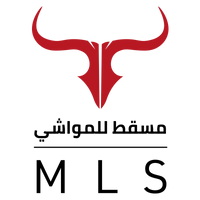معروفة عالميًا بمنتجاتها المتميزة من اللحم، تتألق أستراليا بشكل رئيسي من خلال علامتها التجارية المرموقة لحم واجيو . كطعام فاخر يوشك على الاندثار، يجذب شريحة لحم واجيو الأسترالية المستهلكين من خلال نكهته الفاخرة مع الحفاظ على طراوة استثنائية وأنماط تمويج رائعة. ينبع السعر المرتفع للواجيو الأسترالي من كيفية خلق خصائص محددة لتكلفته وقيمته. تناقش الفقرة التالية العناصر التي تدفع سعر لحم واجيو الأسترالي إلى جانب خصائصه المميزة في منتجات اللحوم الفاخرة.
ممارسات التربية الفريدة والجينات
التربية الانتقائية للجودة
تمثل أبقار واجيو الأسترالية سلالة حيوانية تهدف تربيتها بدقة إلى تحقيق أفضل خصائص التمويج، وخصائص الطراوة المتفوقة، وسمات ملف النكهة المتفوقة. توجه الخبرة المهنية الإجراء الفريد المستخدم في تربية أبقار واجيو. يؤدي اختيار السلالات الجيدة من قبل المزارعين إلى تربية مواشي استثنائية. تؤدي تقنيات التربية الدقيقة المطلوبة للحوم عالية الجودة إلى متطلبات زمنية وتكاليف باهظة تؤثر على قيمتها الشرائية.
التهجين مع الأبقار المحلية
نتجت عدة أبقار واجيو أسترالية من التهجين بين أبقار واجيو اليابانية ونظيراتها الأسترالية المحلية للتكيف مع الظروف المحلية. من خلال التهجين الهجين، تمكن المنتجون الأستراليون من تطوير أبقار لحم متكيفة مع المناخ المحلي تنتج لحومًا عالية الجودة. تُستخدم إجراءات التهجين للحفاظ على جينات واجيو، وجعل الأبقار قابلة للتكيف، وزيادة تكاليف الإنتاج لهذه الحيوانات.
تغذية متخصصة للتمويج
نظام غذائي يركز على التمويج
يحقق لحم واجيو تمويجًا ملحوظًا من خلال التوزيع المتساوي للدهون داخل العضلات التي تمتد عبر اللحم. يحصل لحم واجيو على قوامه الزبدي ونكهته الغنية بسبب مظهره المموّج. تتلقى أبقار واجيو الأسترالية احتياجاتها الغذائية من خطة وجبات متخصصة تشمل الشعير والذرة وقش الأرز. يتطلب إنتاج لحم واجيو مكونات علف محسنة تتجاوز معايير علف الأبقار بتكاليف إنتاج مرتفعة، مما يؤدي إلى زيادة نفقات المنتج.
فترة تغذية أطول
تنجو أبقار واجيو على نظامها الغذائي الخاص وتحتاج إلى وقت إضافي للوصول إلى مستويات مناسبة من التمويج. تتطلب العملية النموذجية لتسويق أبقار اللحم 18 شهرًا، لكن لحم واجيو يحتاج إلى وقت أطول بكثير يصل إلى 30 شهرًا أو أكثر لتطوير الحجم المناسب والتمويج الكافي. يمدد المصنعون فترة تغذية المواشي، مما يزيد من متطلبات العناية ونفقات العلف، وبالتالي يرفع التكلفة الإجمالية لمنتج اللحم.
عرض محدود من لحم بقر واجيو
منتج حصري ومحدود
يظل لحم بقر واجيو الأسترالي مكلفًا لأن عرضه محدود للسوق. ينتج تصنيع لحم بقر واجيو على الأراضي الأسترالية كميات ملحوظة؛ ومع ذلك، يظل حجمه صغيرًا ضمن حدود سوق اللحوم الدولي. يحافظ متخصصو ماشية واجيو على مزارع محدودة، مع التركيز على تقديم معايير إنتاج لحوم ممتازة. لحم بقر واجيو الأسترالي يظل منتجًا فاخرًا مكلفًا لأن الإنتاج المحدود يخلق ندرة في السوق.
زيادة الطلب العالمي
زاد الطلب الصناعي على اللحوم عالية الجودة، بما في ذلك واجيو، بسرعة مؤخرًا. تشهد المأكولات الواجيو من أستراليا اتجاهًا تصاعديًا في الثقافة الغذائية العالمية لأن المزيد من الطهاة والمستهلكين يبحثون عن نكهاتها المميزة وجودة لحمها. يدفع توسع الطلب العالمي عبر أمريكا واليابان وأوروبا سعر هذا المنتج الفاخر إلى الأعلى لأن مستويات الإنتاج لا تستطيع مواكبة احتياجات المستهلكين.
ارتفاع تكاليف الأراضي والزراعة
أراضٍ مكلفة للرعي
نظرًا لاحتياجاتهم الغذائية، تحتاج ماشية واجيو إلى مساحات واسعة للرعي. تظل أسعار الأراضي مرتفعة في جميع أنحاء أستراليا، خاصة في المناطق المميزة ذات المناخ والظروف الاستثنائية لتربية الماشية الممتازة. يجب على مزارع واجيو شراء مساحات واسعة من الأراضي لعملياتها، وهذا الاستحواذ الكبير على الأراضي يرفع من إجمالي نفقات التشغيل.
ممارسات الزراعة المستدامة
بفضل بروتوكولات الزراعة المستدامة، يحافظ مزارعو واجيو الأستراليون على ممارسات مثل استخدام الأعلاف العضوية وتقليل استهلاك المياه والحفاظ على المعاملة الأخلاقية لماشيتهم. تصاحب هذه الممارسات المفيدة للبيئة تكاليف تشغيلية عالية تعزز جودة اللحم. تُنقل التكاليف الإضافية للمنتجين إلى العملاء، الذين يدفعون أكثر مقابل المنتج النهائي.
الخاتمة
اليوم، لحم بقر واجيو الأسترالي يظل من الخيارات الطهوية الفاخرة لأنه يقدم تجربة طعام فريدة. عوامل متعددة، بما في ذلك طرق اختيار السلالة، وبرامج التغذية المستهدفة، ومتطلبات رعاية الحيوانات الصارمة، ومستويات الإنتاج المضبوطة، تولد التكلفة العالية لهذا العرض الفاخر في السوق. يجذب لحم بقر واجيو الأسترالي مستهلكي اللحوم الفاخرة حول العالم لأنه يقدم نكهات وقوامًا لا مثيل لهما وتجربة تناول عالية الجودة. لتذوق لحم بقر واجيو الأسترالي الأصيل، زوروا مجموعة لحم بقر واجيو MLS الإمارات أو استشيروا موقعهم الإلكتروني على MLS UAE Wagyu Beef.

